Jiangxing Chuxue Tu (First Snow on the River Scroll), created by Zhao Gan (赵幹) during the Five Dynasties’ Southern Tang period (10th century), is a masterpiece of early Chinese landscape and genre painting. Now housed in the National Palace Museum, Taipei, this handscroll captures the arduous lives of fishermen along the Yangtze River during a frigid winter, juxtaposed with travelers braving the snow.
Key Features
- Artistic Technique
- Ink and Color: The scroll employs diluted ink washes on silk (danmo zirang), with white powder sprinkled to depict falling snow—a technique known as “powder bouncing” (tanfen fa).
- Brushwork: Trees and rocks are rendered with dry, angular strokes, while water波纹 uses sharp, flowing lines. Reeds are painted with ink mixed with ochre and white, creating a lifelike texture.
- Composition and Imagery
- The scroll unfolds as a continuous narrative, contrasting laboring fishermen (barefoot, in thin clothing) with shivering travelers (bundled in coats).
- Scenes include fishermen casting nets, boats navigating icy waters, and a child huddling in a reed hut, all set against barren trees and mist-shrouded banks.
- Historical Significance
- Inscription: The opening bears a calligraphic title attributed to Li Yu (李煜), the last Southern Tang emperor: “江行初雪南唐學生趙幹狀” (“First Snow on the River, by Southern Tang Academy Student Zhao Gan”).
- Provenance: The scroll passed through imperial collections of the Song, Jin, Yuan, Ming, and Qing dynasties, with seals from Emperor Qianlong and collectors like An Qi and Liang Qingbiao.
- Cultural Context
- As a genre painting, it reflects Southern Tang’s shift toward documenting everyday life rather than idealized landscapes.
- The work exemplifies Zhao Gan’s focus on Jiangnan (southern China) scenery, characterized by “misty rivers and luminous landscapes” (yanbo haomiao, fengguang mingmei).
Notable Details
- Dimensions: 25.9 cm × 376.5 cm, emphasizing a horizontal “close-up” perspective that immerses viewers in the scene.
- Material: Silk (juanben), with muted colors and subtle ink gradations enhancing the wintry atmosphere.
- Legacy: Praised by Ming critic Zhang Chou as “unprecedented in its ethereal snowscape”, it remains a benchmark for authentic Five Dynasties art and influenced later painters like Wang Meng.
Colophons and Annotations
- Qianlong Emperor’s Poem: Appended to the scroll, his verse reflects admiration for Zhao Gan’s realism: “驴背客寒风打笠,江心渔乐舟冲凌…” (“Travelers shiver under bamboo hats, while fishermen brave the river’s chill”).
- Yuan Dynasty Inscriptions: A 1329 colophon by eleven scholars of the Kuizhang Pavilion underscores its role as a moral exemplar for rulers.

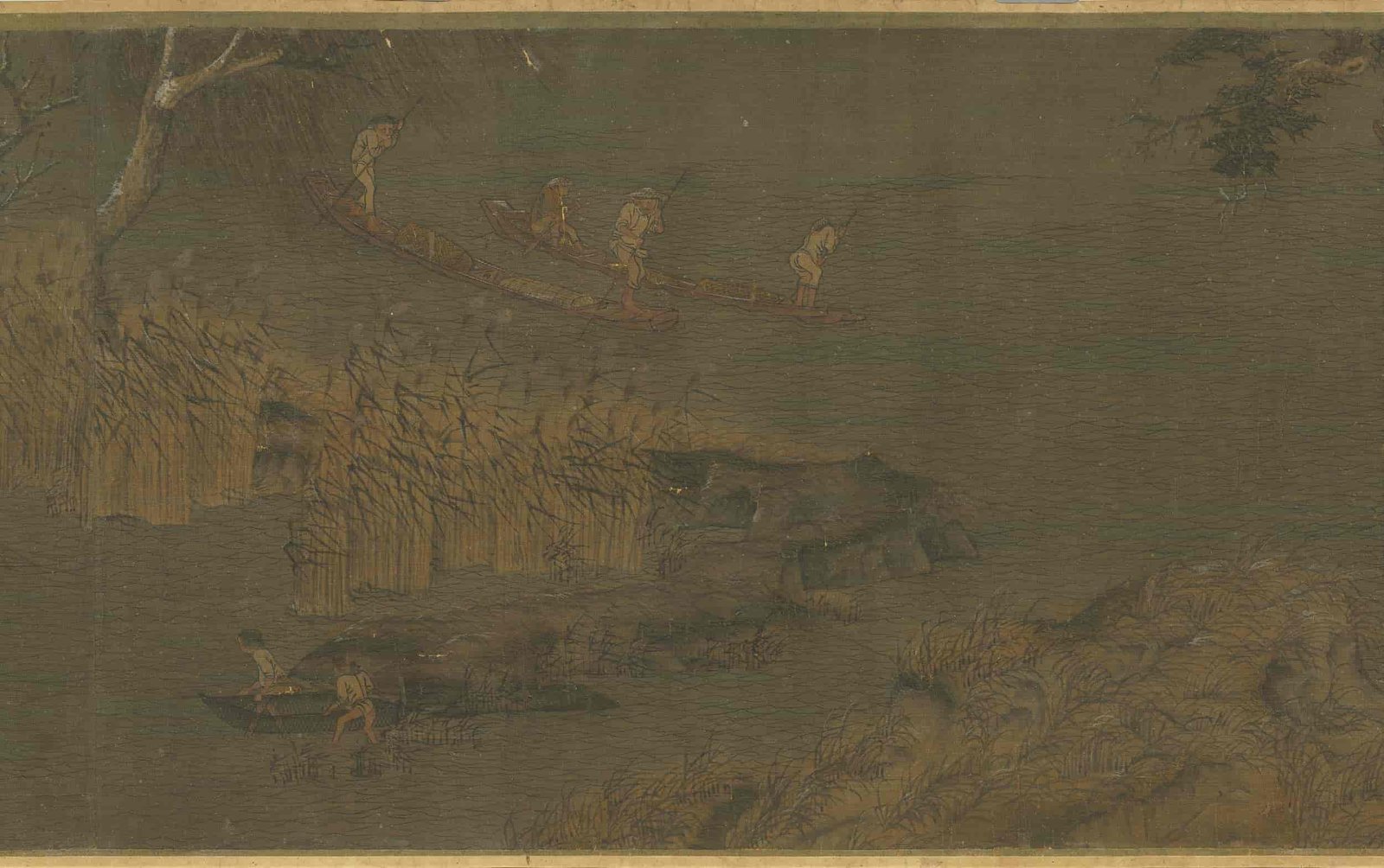
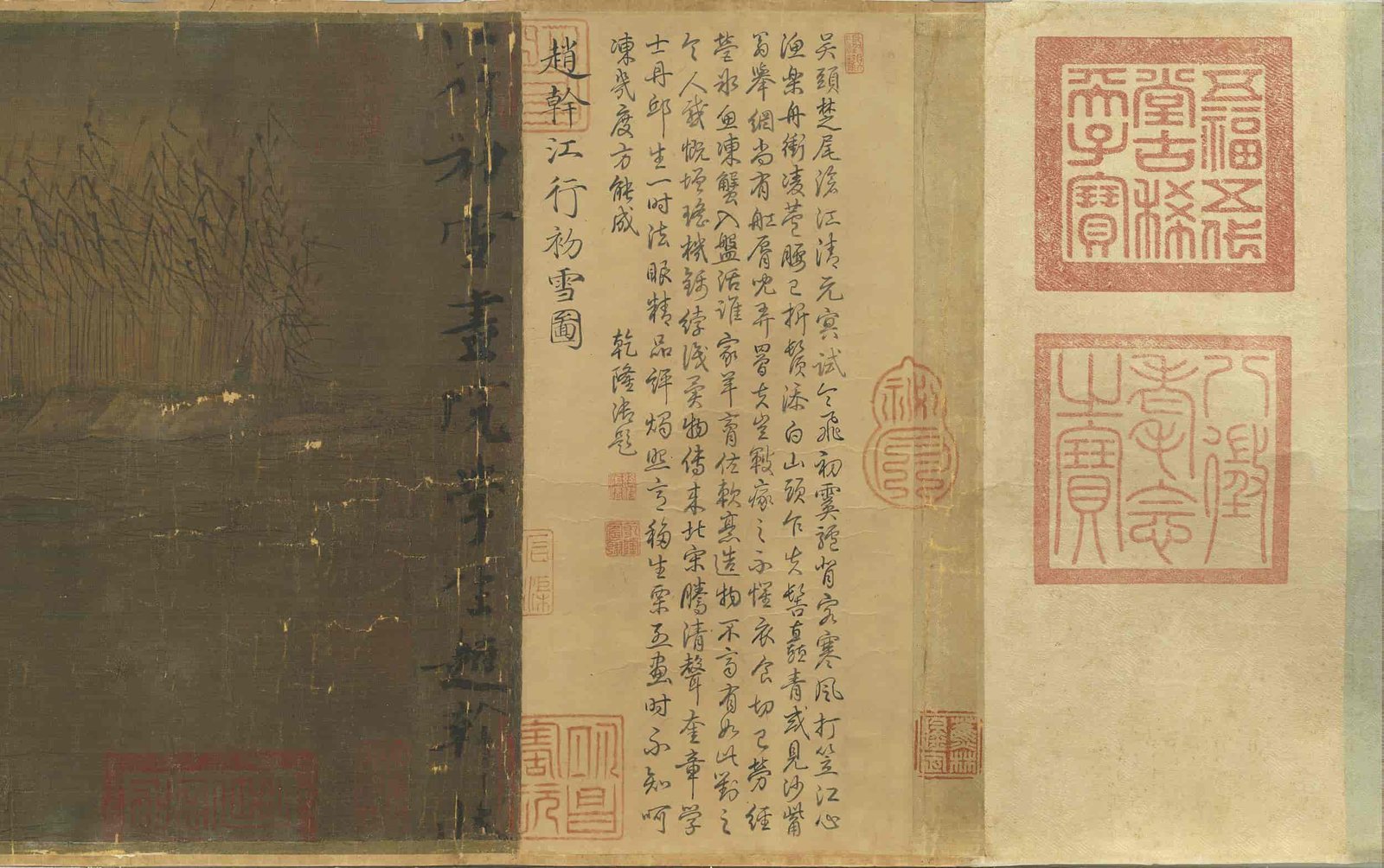
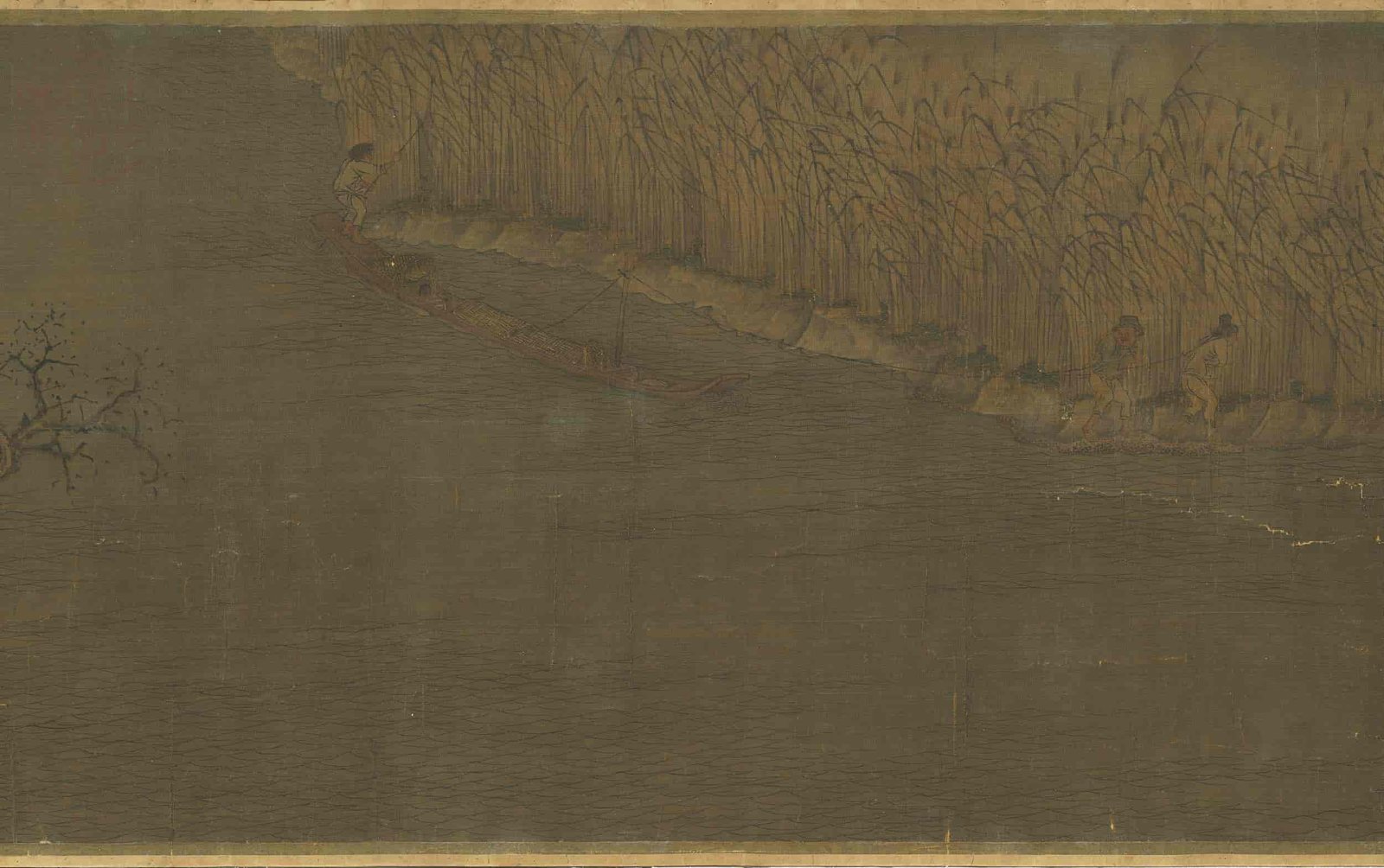
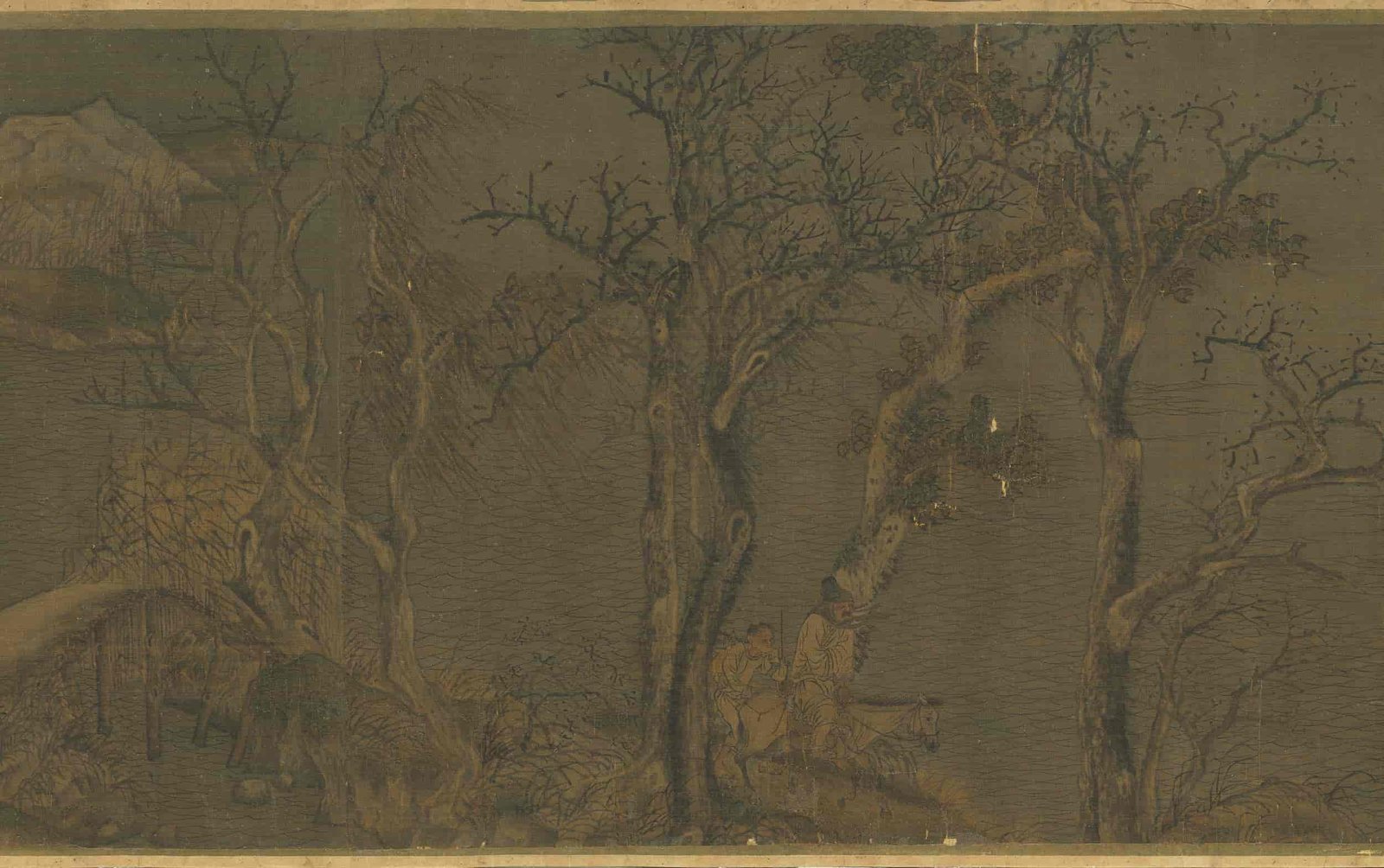
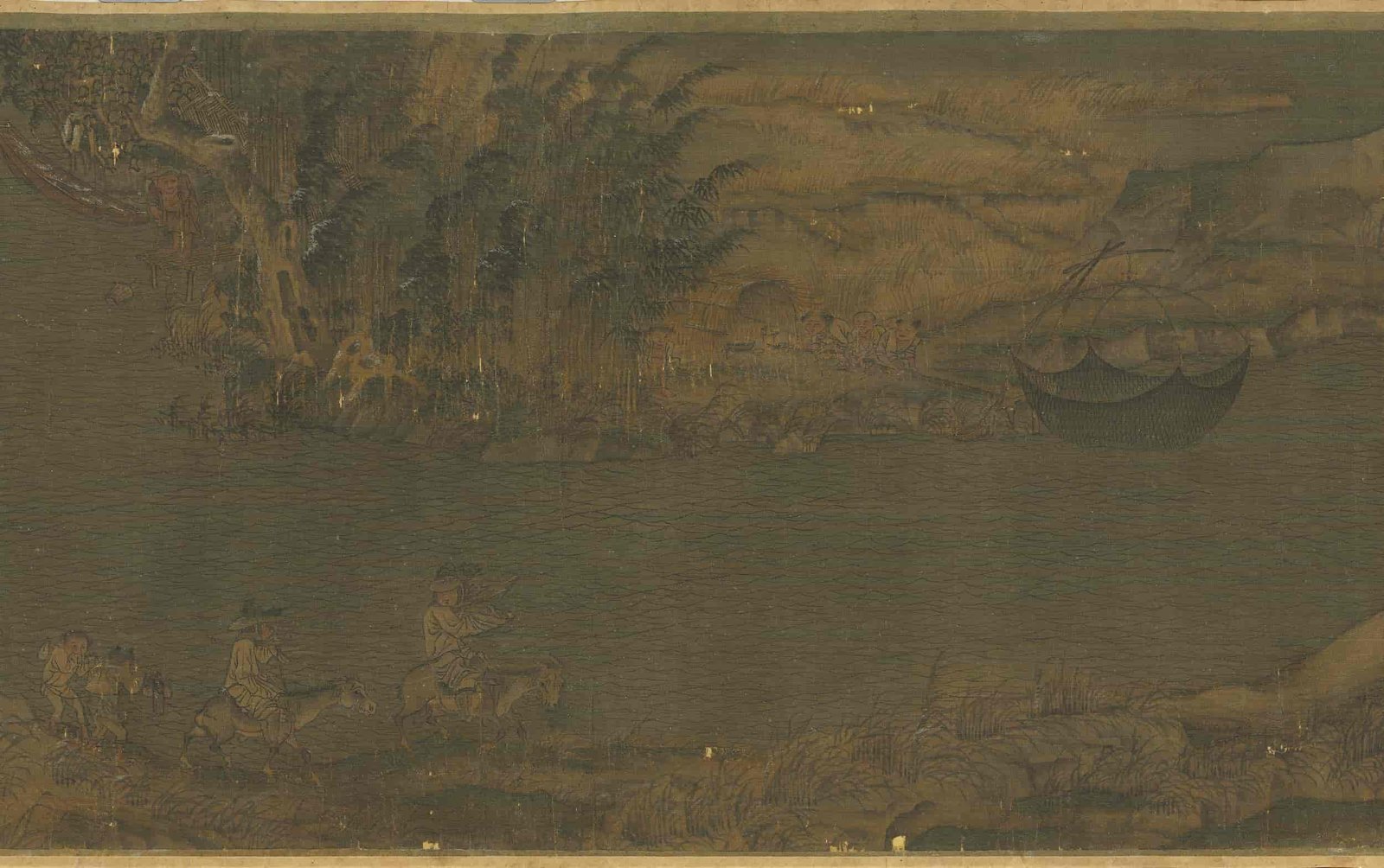
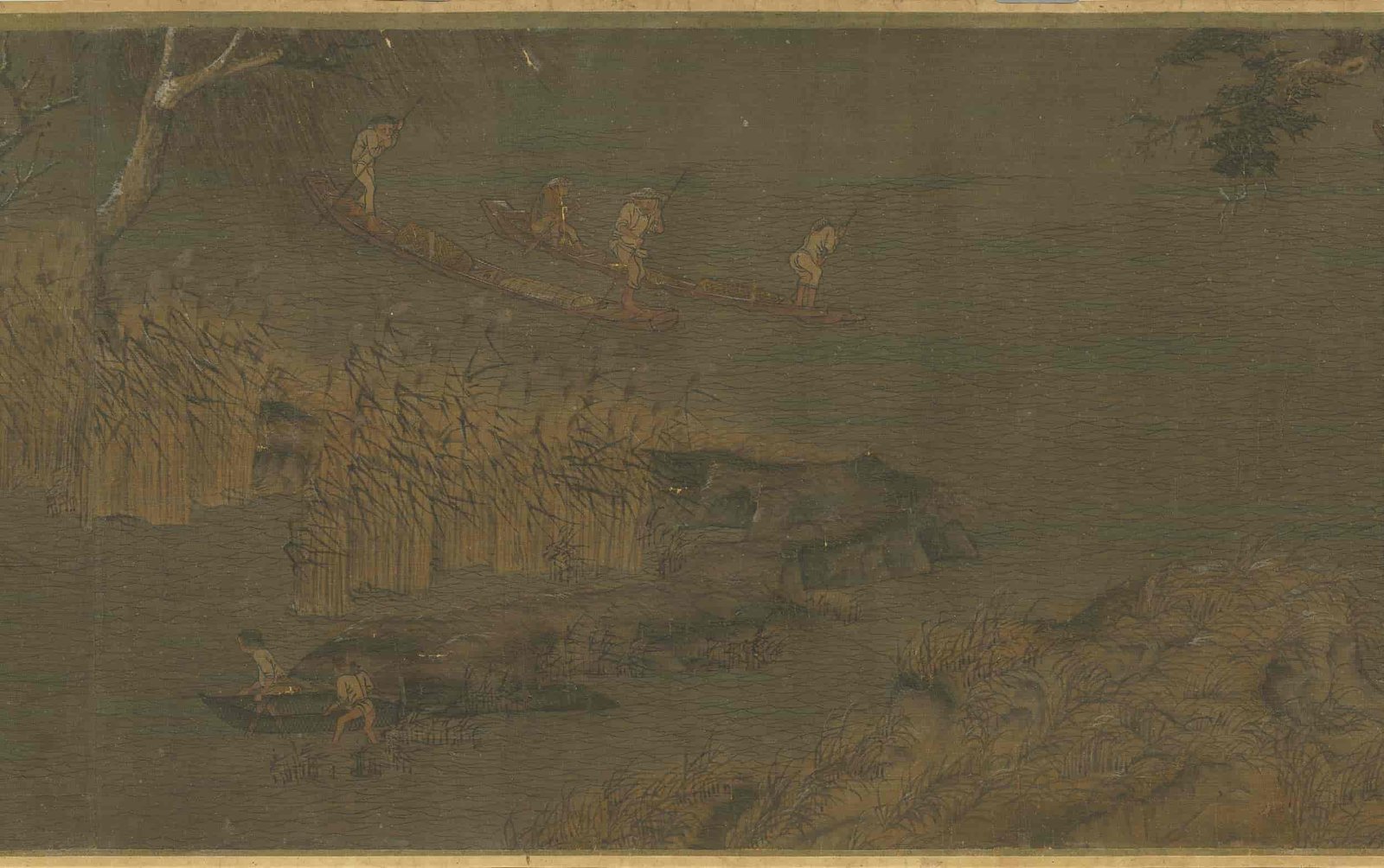
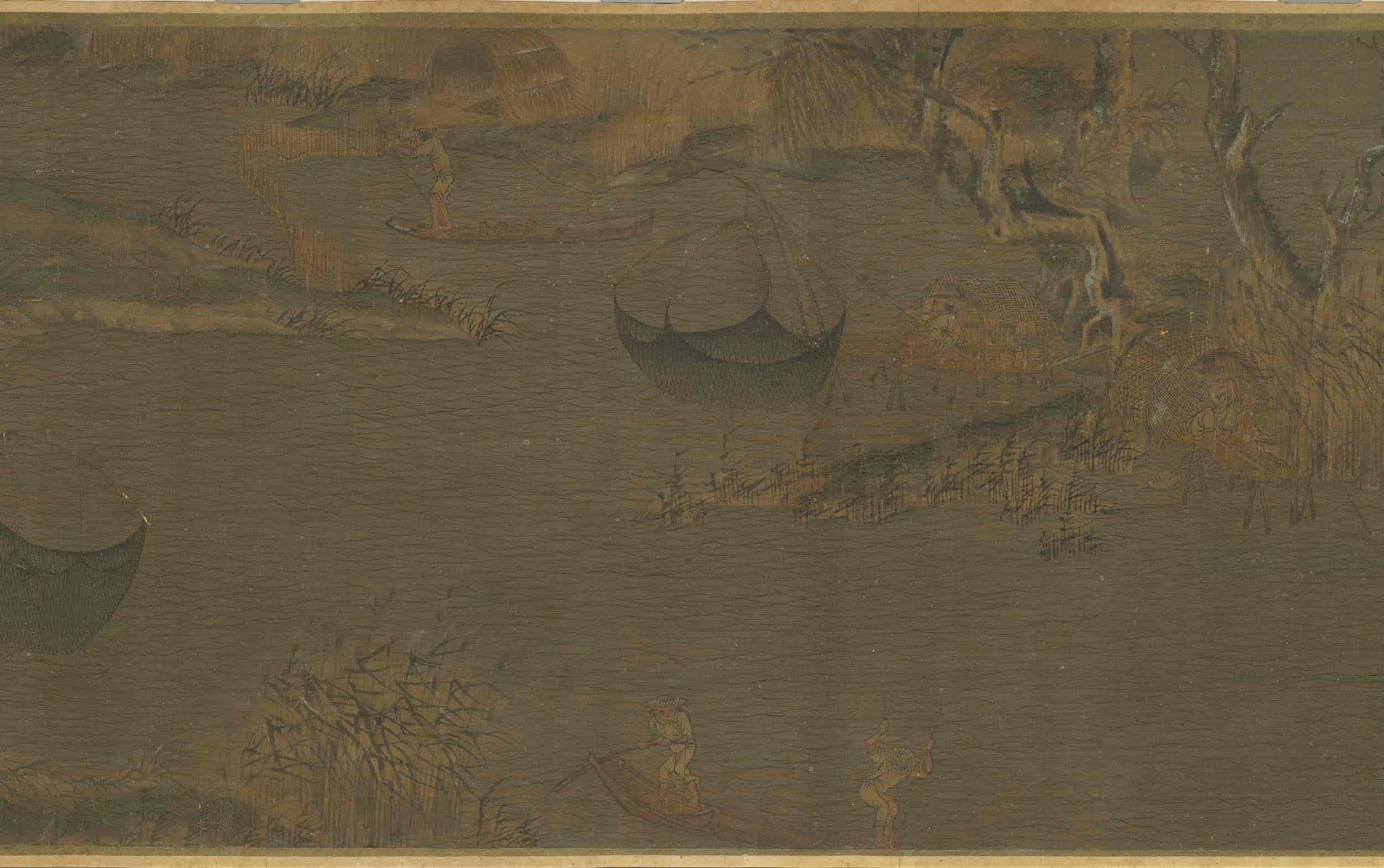
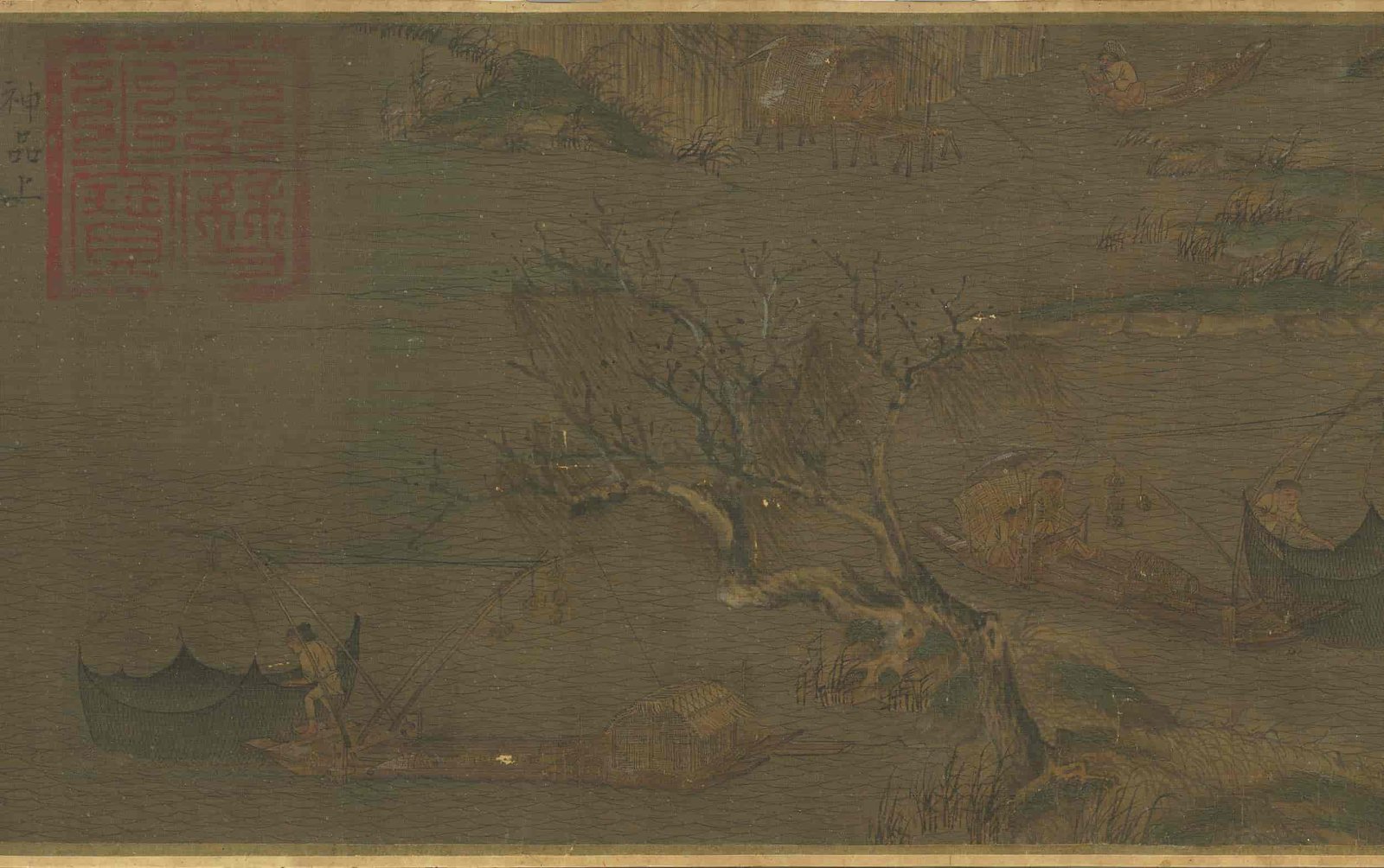
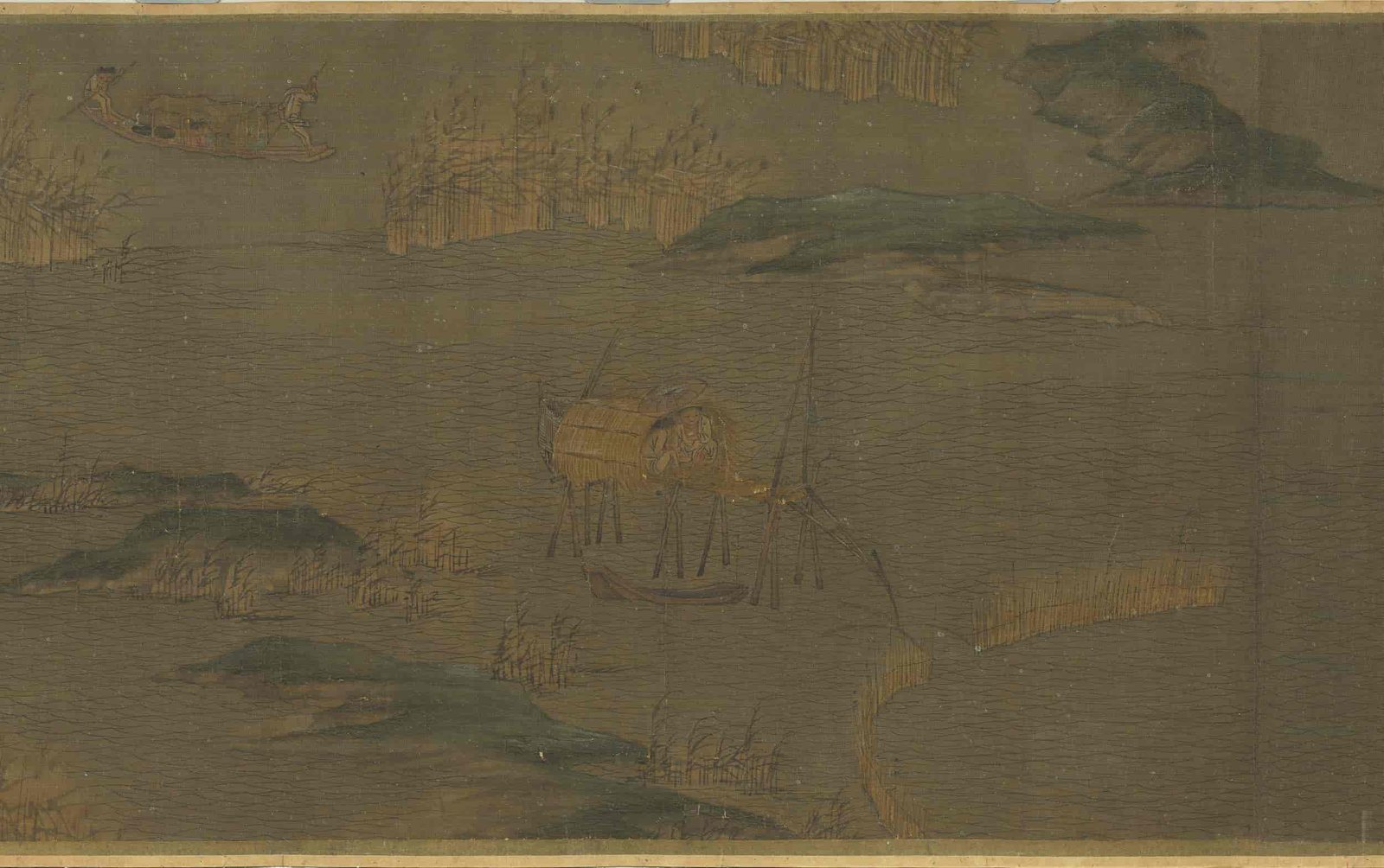
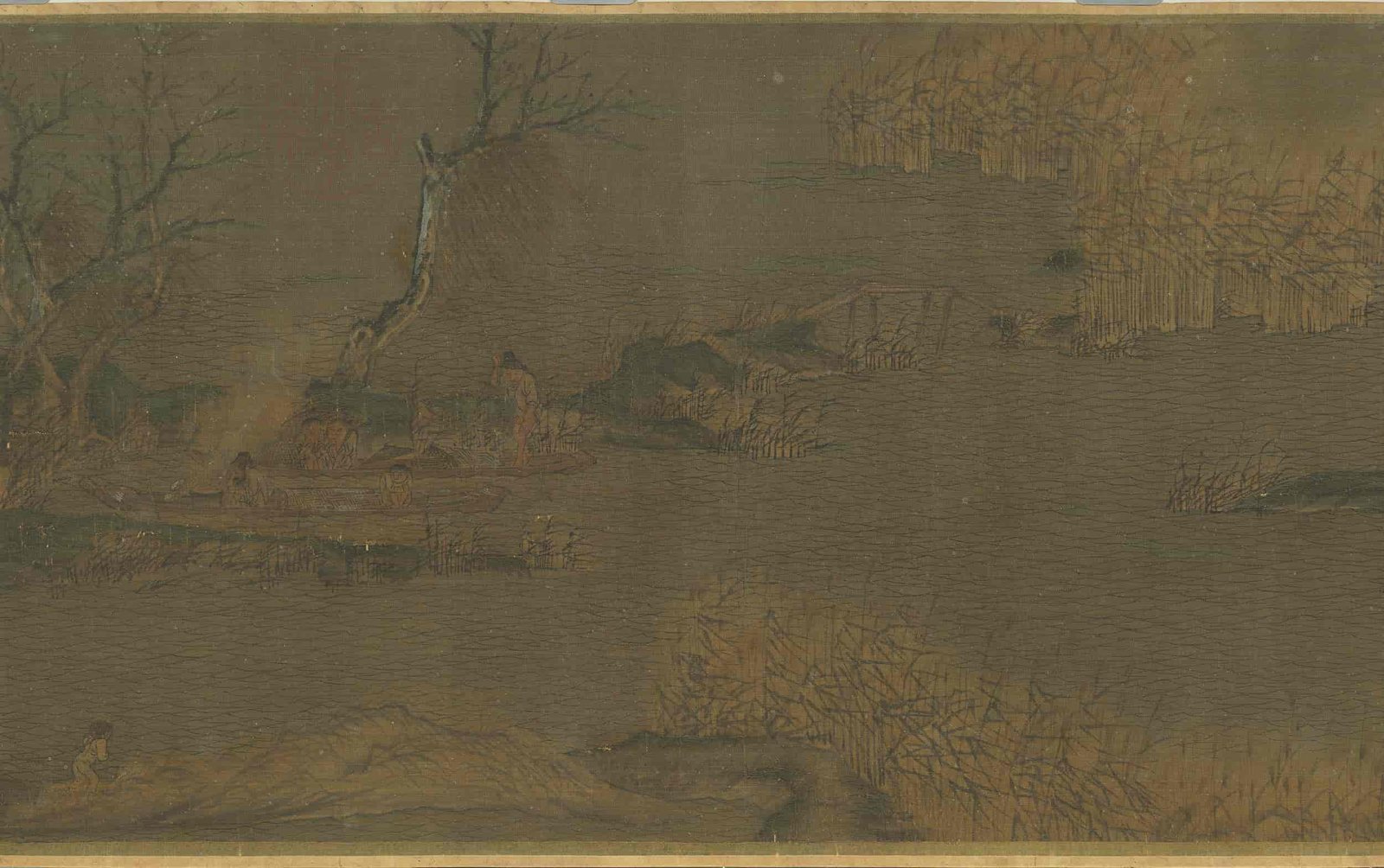
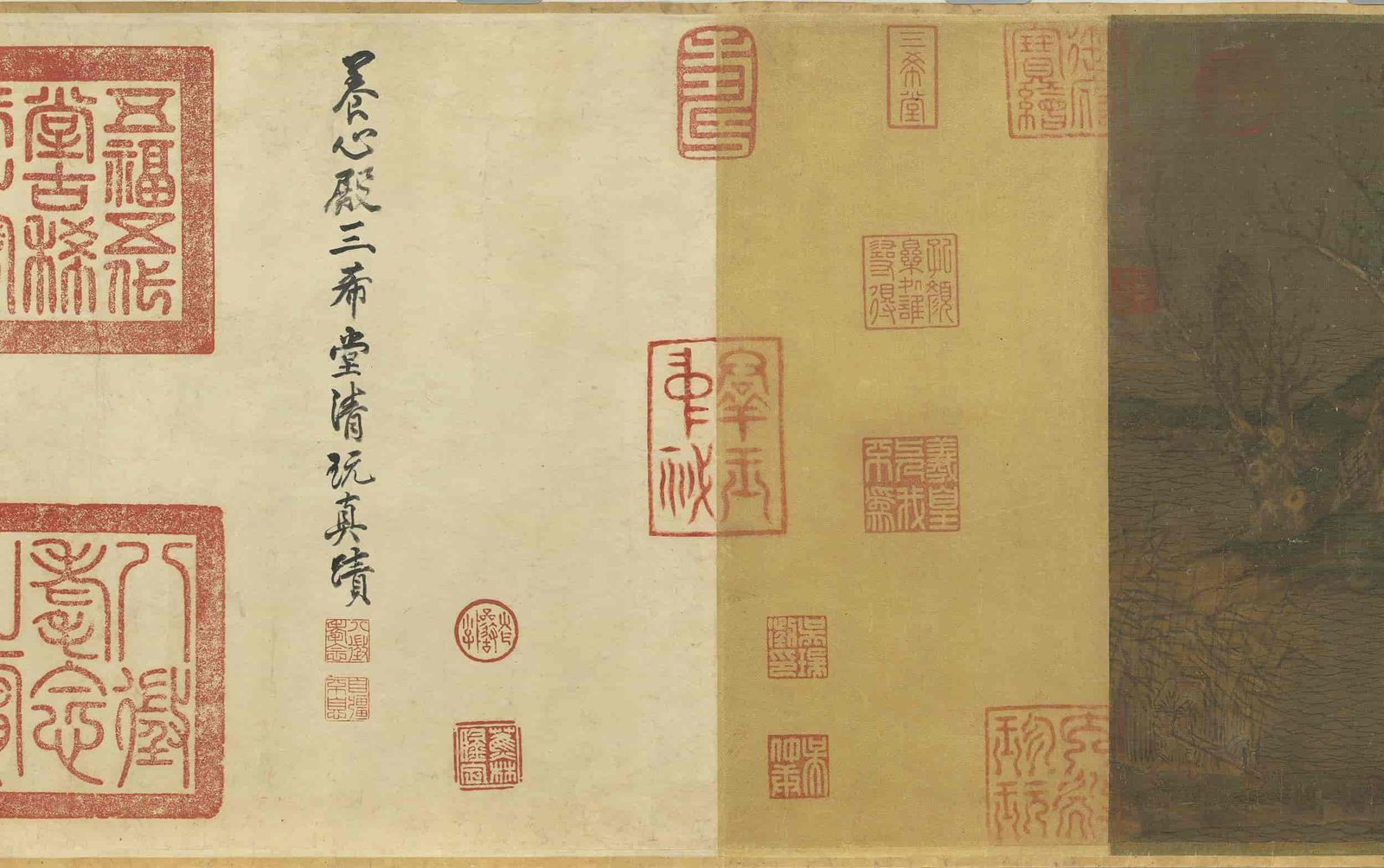
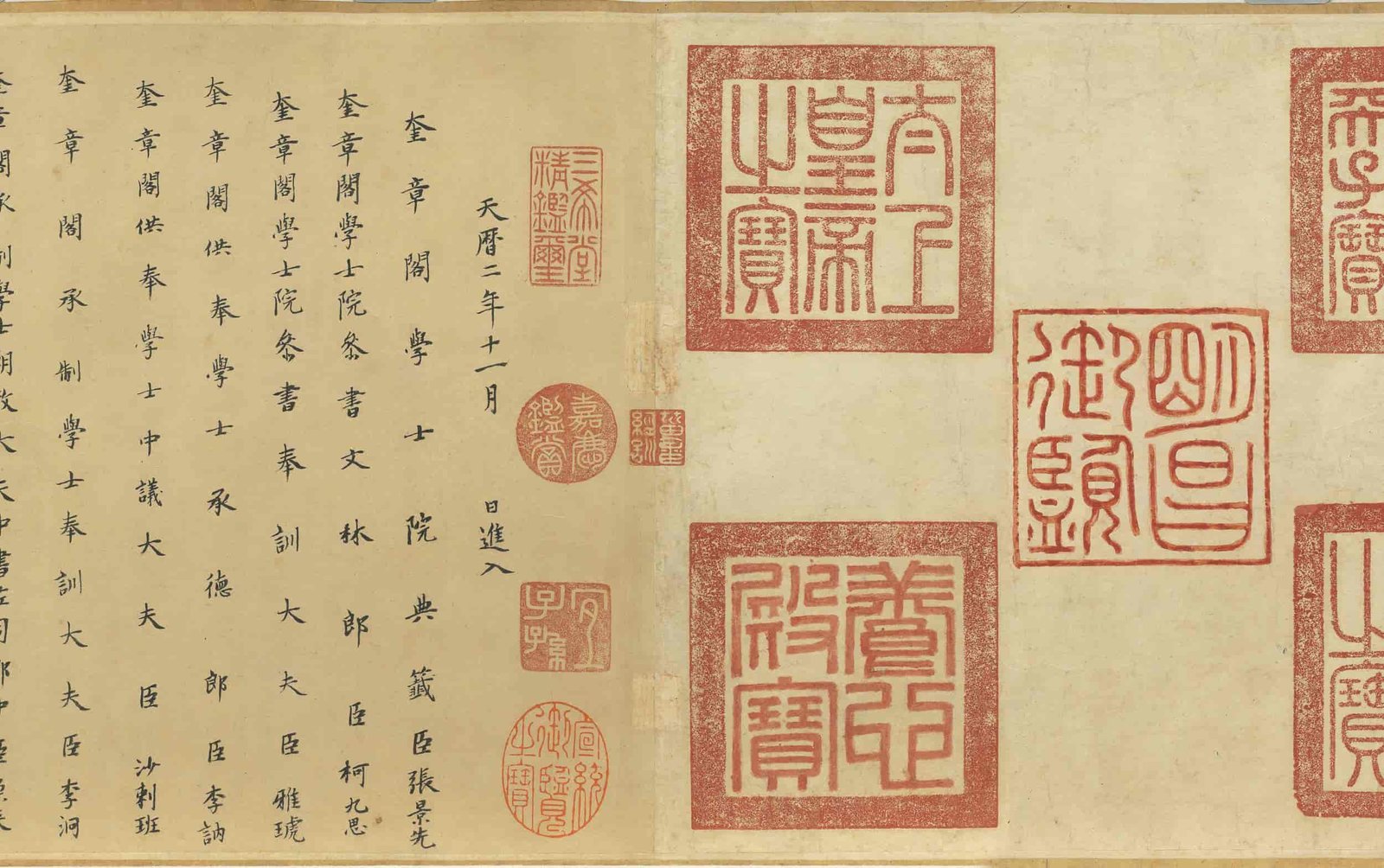
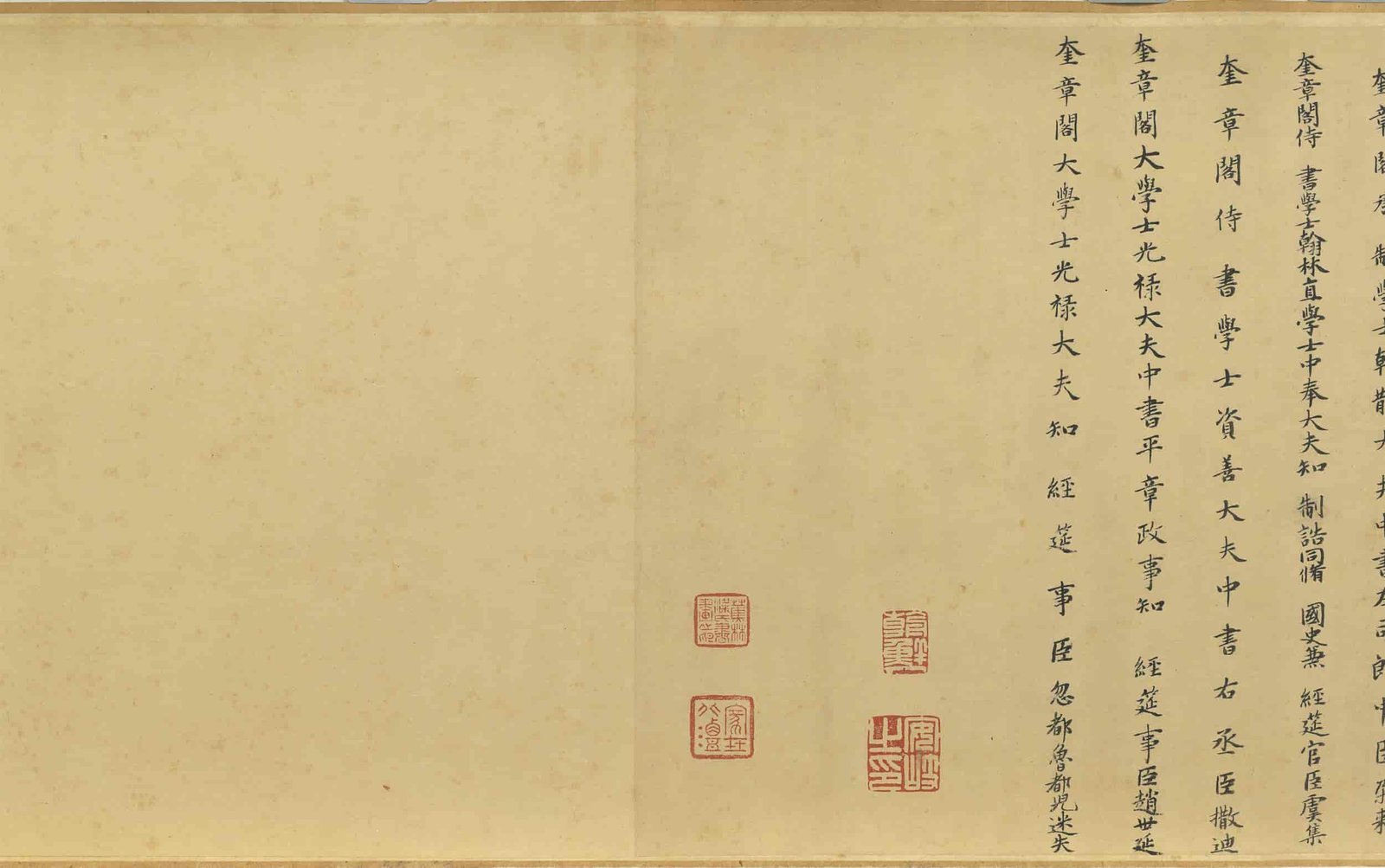
评价
目前还没有评价